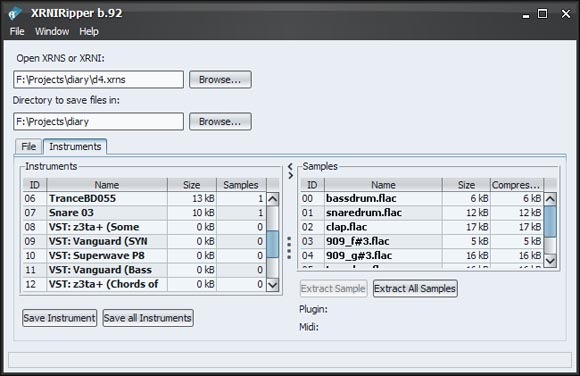The tracker is back. Piano rolls and fake multitrack tape turn out not to be the only way to conceptualize how music is put together in digital form. And Renoise is a terrific way to learn a ground-up approach to production, because you get the quick workflow of the tracker without having to sacrifice so many of the “comforts of home” we’re used to in modern DAWs. So we’re pleased to have our Renoise + Indamixx contest going, not only for existing users, but newcomers, too.
Renoise users have one way of evangelizing why they love their tool, which is to show off, as seen in the excellent video above. But what if you’re new to Renoise, or new to trackers in general, and want to experiment? You don’t even need to make a cash investment: you can start to experiment with a relatively full-featured demo version on Mac, Windows, and Linux. The time investment is the likely barrier. So I asked Montreal-based Dac Chartrand of Renoise, who is also the man who keeps tabs on the community, to share his tips. Here’s what he suggests:
1) XRNS files are source code. Find one you like, load it up, press the spacebar and start clicking around. Renoise will happily chug along as you explore each and every facet of the sequencer. When you get bored of clicking, try remixing. Move some notes around, press the escape key and jam on the QWERTY keyboard. Anyone familiar with trackers will tell you that this is how it’s always been done, this is how it always should be, file sharing since the days of Amiga. PRO TIP: Tutorials and Demo Songs are in the Help menu.
2) YouTube is your friend. Go there, type Renoise, watch and learn. Enthusiastic users show off their tunes, some even make "Do It Yourself" tutorials for good measure.
3) Download the "Pattern Command Quick Reference Card" PDF file. This DIY reference was created by a user in the Renoise forums. It’s a cool print out that folds up and sits pretty on your desk. Pattern Commands are special columns to the right of notes; lets you take sample manipulation to the next level.
PDF: http://paulmerchant.com/downloads/RenoiseReferenceCard2.pdf
4) If you don’t know trackers, then forget everything you learned about other DAW workflows. You must unlearn what you know in order to be a jedi master. For example, other sequencers have a very strong relation between track and instrument. In Renoise, instruments go anywhere, tracks are what you make of them. Other sequencers have a timeline, Renoise has patterns that you chain together to make a song. A newbie mistake is to try to make one gigantic pattern. Instead, make several smaller patterns and sequence them.
5) Documentation. Yup, it’s thee copout tip. But seriously, there are tons of documentation on the Renoise website. Not reading them is kind of stupid. When all else fails, browse the forums or see if anyone in IRC chat can help.
DOCS: http://tutorials.renoise.com/
FORUMS: http://www.renoise.com/board/
IRC: http://www.renoise.com/community/chat/
Thanks, Dac! Now, I’ll also be working on some stuff for CDM soon, as well, but this should get you going in the meantime.
Must-Have Renoise Utility
Bantai at Renoise also shares (via comments) an excellent tool for sharing your work in Renoise, compressing files, and – aprospos of Dac’s suggestion – inspecting existing XRNS files.
Another tip: you can get the filesize of your song down by up to a factor 10 if you use lossy compressed samples instead of the default 32-bit stereo FLAC file format. I reckon a small filesize wins you bonus points in a tweaker’s compo.
Since Renoise songs are basically ZIP files containing song data and samples, it’s almost trivial to run the extracted contents of the song through OggDrop or a similar application and zip it up again.
It can be easier: I have written a Java tool that takes the work out of your hands and compresses your Renoise XRNS song automatically:
(Java geeks, he also writes me: “I’m using vorbis-java lib from xiph.org and a modified version of jFLAC to support Renoise’s custom 32-bit FLACs. There are also several libs included to convert sample and bit rates. Curiously enough, I couldn’t find any other Java apps that encode files to Ogg Vorbis.”)
More Videos, Tips?
It’s a couple of years old and based on an earlier version, but I especially liked this tutorial for demonstrating what the workflow is about:
And if you Renoise-using readers have tips, or if you find a YouTube video you think is especially awesome, please do share. I’ll get back to working on my basic guide.
